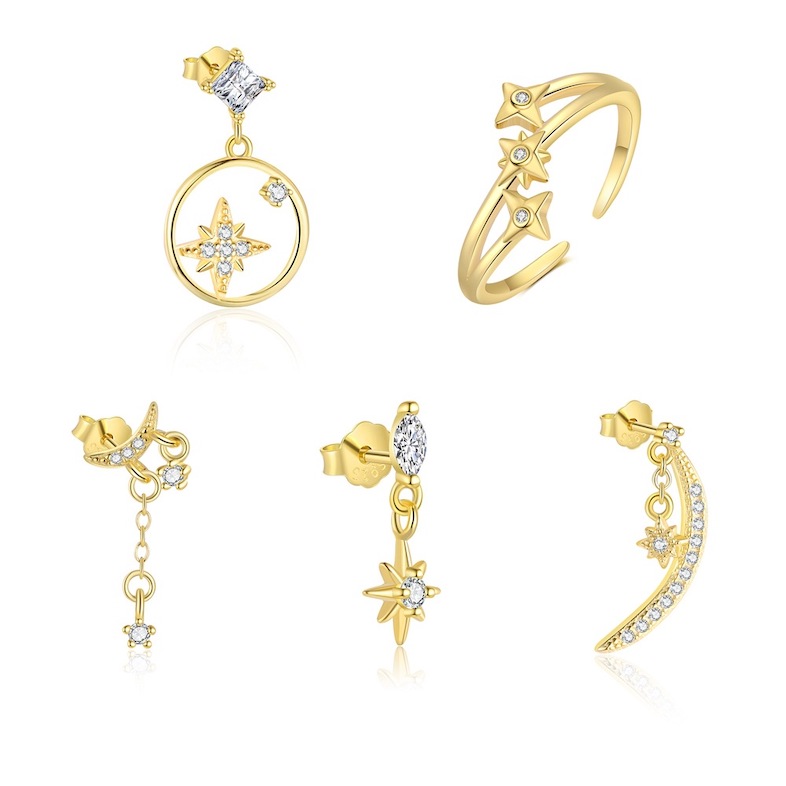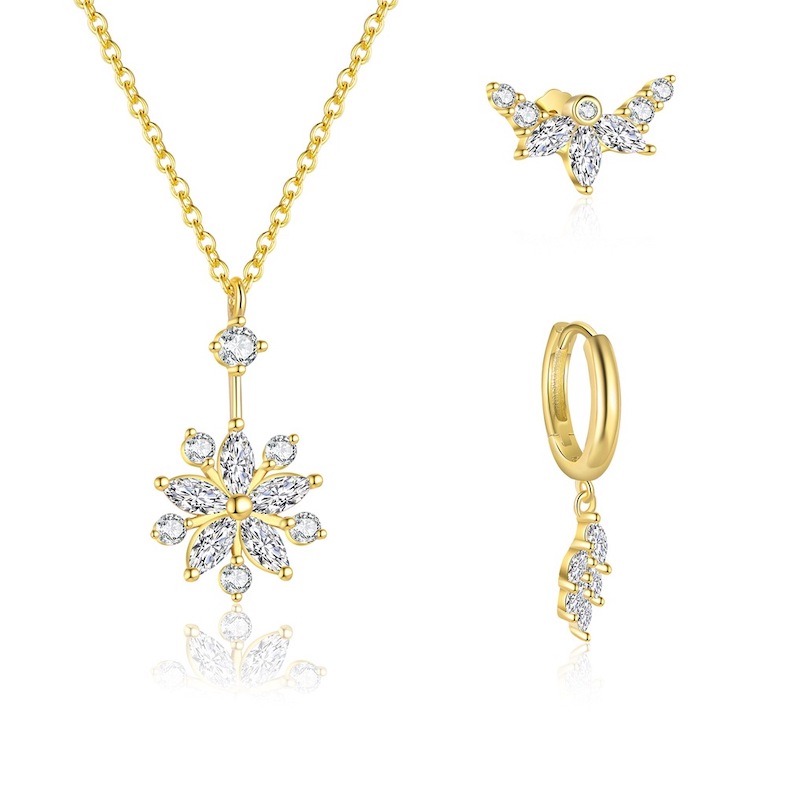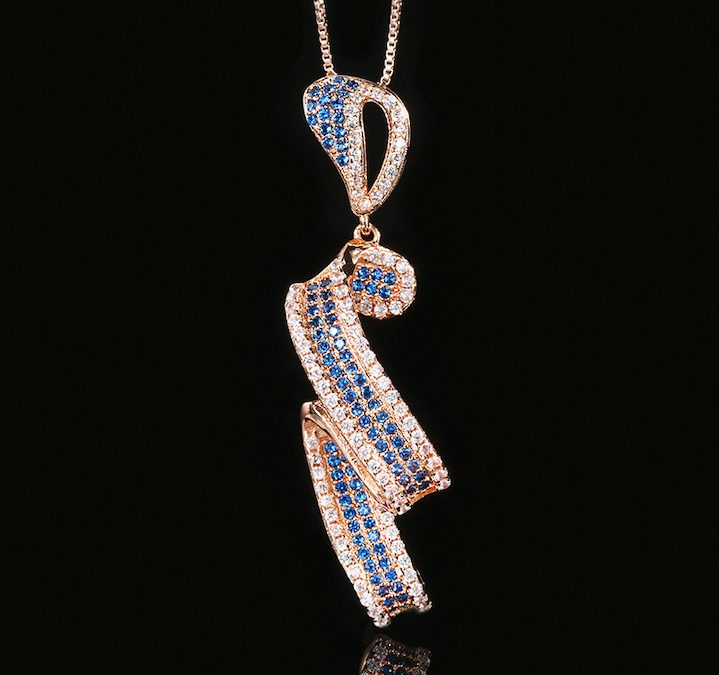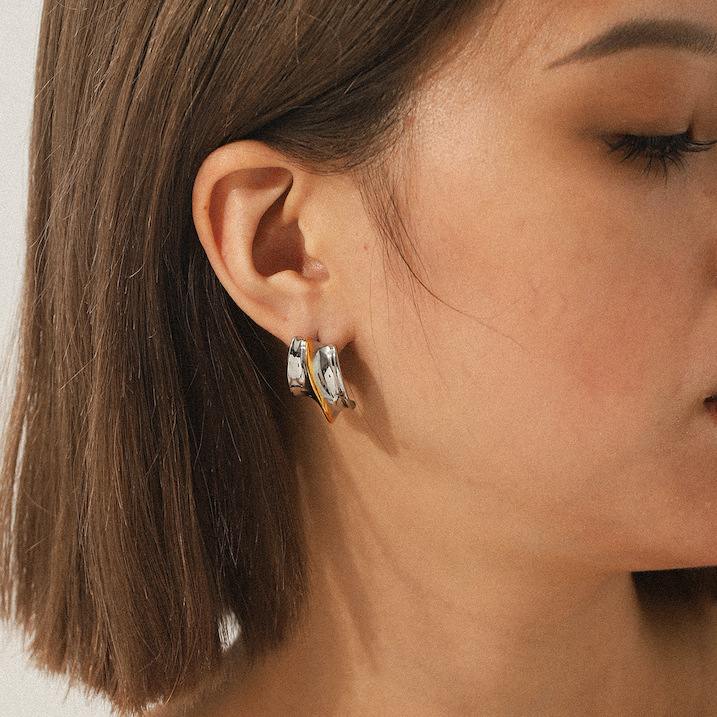Silver Jewelry: A Comprehensive Analysis of 925 Sterling Silver Jewelry Design, Production Process, and Buyer’s Guide for Procurement and Inspection
As a timeless classic in the fashion world, 925 Sterling Silver has become one of the core categories in the global jewelry market due to its cost-effectiveness, strong malleability, and eco-friendly properties. This article will delve into the design trends and production processes of 925 silver jewelry, while providing practical procurement and inspection tips for buyers to ensure accurate product selection and quality control.
I. Design Trends and Innovation Directions for 925 Silver Jewelry
- Naturalism and Fluid Lines
- Design Inspiration: The Spring/Summer 2025 trends focus on “Poetry of Nature,” with elements such as flowers, ocean waves, and starry skies at the core. Three-dimensional carvings, fluid curves, and organic shapes are used to showcase natural beauty. For example, cabochon gemstones combined with silver bases simulate floral textures and color variations, conveying a sense of ecological harmony.
- Craftsmanship Highlights: 3D printing technology is used to rapidly prototype complex structures, while hand engraving enhances detail and texture, such as the scale texture of serpentine designs or the knot patterns of intertwined vines.
- Fusion of Technology and Retro Styles
- Two-Tone Metal Combinations: Alternating gold and silver tones create visual impact, such as Tous’ iconic bear motifs paired with curved metal structures, blending simplicity with high recognition.
- Virtual Interaction Design: Augmented Reality (AR) try-on technology is integrated to offer a virtual-real hybrid experience, attracting digitally native consumers.
- Cultural Symbols and Emotional Expression
- Healing and Playful Elements: Cartoon bears, heart pendants, and other whimsical designs are paired with colored zirconia or mother-of-pearl to convey lighthearted joy.
- Revival of Traditional Craftsmanship: Ancient techniques like engraving and filigree are reinterpreted to infuse modern designs with cultural depth, such as the innovative patterns inspired by Miao silver.
II. Detailed Production Process of 925 Silver Jewelry
- Material Preparation and Melting
- Alloy Composition: 925 silver consists of 92.5% pure silver and 7.5% copper/nickel alloy to enhance hardness and oxidation resistance. Precise weighing of raw materials is essential to ensure consistent composition.
- Casting and Molding: The silver is melted at high temperatures and poured into molds to form rough blanks, which are then hammered into shape after cooling.

- Precision Processing and Engraving
- Engraving and Stone Setting: Different chisels (pointed, rounded, etc.) are used for hand-carving patterns, while mechanical settings secure gemstones. For example, ORANGE CUBE’s fully diamond-set serpent design requires high-precision stone setting.
- Welding and Polishing: Complex components are welded together and polished to a mirror finish using machines or by hand.
- Surface Treatment and Quality Inspection
- Acid Cleaning: A mixture of nitric and sulfuric acid removes surface oxidation, with precise timing to avoid over-corrosion.
- Electroplating Protection: Some products are rhodium- or platinum-plated to enhance tarnish resistance.
III. Key Standards for Buyers in Procurement and Inspection
- Material Verification
- Purity Markings: Check for stamps such as “S925” or “925.” Avoid products with unclear or missing markings.
- Color and Luster: High-purity silver exhibits a uniform bright white color, while impurities may cause yellowish or dull tones.
- Density Test: Silver has a density of 10.53g/cm³. It feels heavier than copper but lighter than aluminum. A simple weight check can provide preliminary verification.

- Craftsmanship Detail Inspection
- Welding Points and Stone Setting Stability: Visually inspect joints for smoothness and gemstones for secure settings, ensuring no looseness or glue residue.
- Surface Finish: Polishing should be even and free of scratches; plating should not peel. Engraved lines should be clear and free of burrs.
- Functionality and Durability Testing
- Bend Test: Pure silver is soft and bendable but not brittle. Products with excessive copper content may be harder and more prone to cracking.
- Oxidation Test: Gently rub the surface and observe how quickly it tarnishes. High-quality silver tarnishes more slowly.
- Certifications and Compliance
- Eco-Friendly Certifications: Ensure the use of nickel-free alloys (hypoallergenic) or recycled silver, complying with EU REACH standards.
- Quality Inspection Reports: Request third-party testing certificates from suppliers to verify compliance with heavy metal content limits (e.g., lead, cadmium).
IV. Procurement Strategies and Market Recommendations
- Trend-Based Product Selection: Prioritize designs that blend natural elements (e.g., flowers, ocean themes) with technological touches (e.g., two-tone combinations, AR interactivity) to align with 2025 consumer preferences.
- Example: A floral-inspired silver bracelet with AR-enabled virtual try-on features.
- Supply Chain Optimization: Partner with factories equipped with 3D printing and eco-friendly processes to reduce lead times and defect rates.
- Example: A factory in Yunnan, China, specializes in hand-engraved silver jewelry at competitive costs.
- Cost Control: Compare labor costs across regions (e.g., lower costs for handcrafting in China) to allocate budgets effectively.
By following these detailed guidelines, buyers can ensure they source high-quality, trend-aligned 925 silver jewelry that meets both market demands and consumer expectations.





